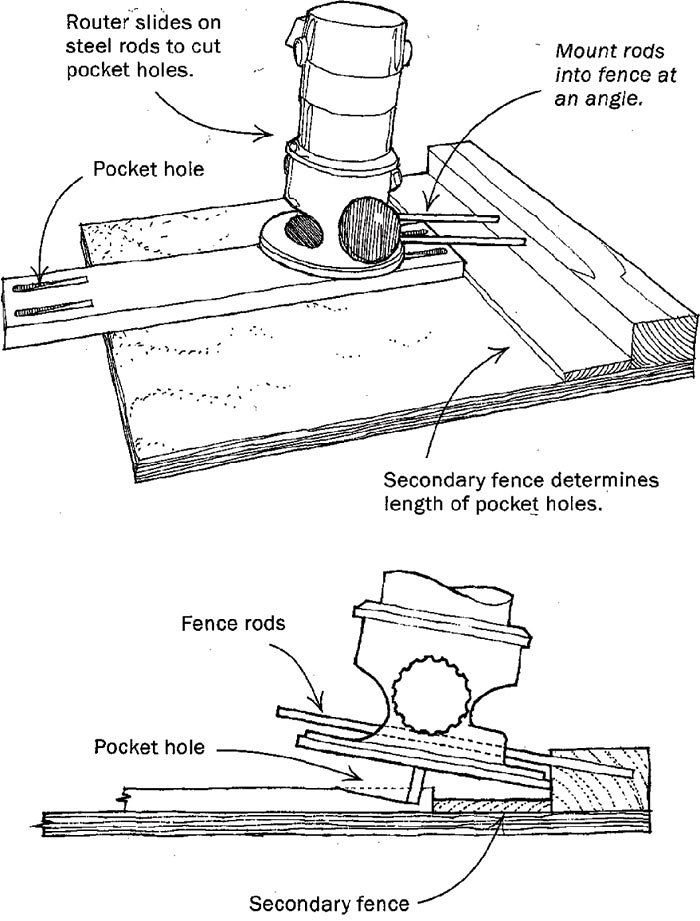Router-Cut Pocket Holes Revisited

I liked Michael Csontos’ idea for making pocket holes with a router and a sliding ramp (Fine Woodworking #134, p. 20). But the fixture seemed complicated to build, and it limited the width of workpiece that could be used. Here’s another approach that doesn’t limit the size of the workpiece. This approach uses the router’s steel fence rods as sliding rails.
Start by making a full-sized, side-view drawing of the fence, the router base and the desired pocket holes. The drawing will give you the rod angles and locations in the fence. These two variables, along with the router-bit depth, control the length and depth of the pocket hole. Drill angled holes into the fence spaced at the right width to fit the router’s fence rods. Attach the fence to a generously sized, 3/4-in.-thick plywood base. To use the fixture, slide the workpiece into position and clamp. With the router suspended above the workpiece on the fence rods, start the router and slowly slide it down toward the secondary fence to cut the pocket hole.
Timothy Dalton, Middleton, Wis.
Fine Woodworking Magazine, August 2000 No. 143

Fine Woodworking Recommended Products

Double Sided Tape

Woodriver Circle Cutting Jig

Hedgehog featherboards




















Log in or create an account to post a comment.
Sign up Log in